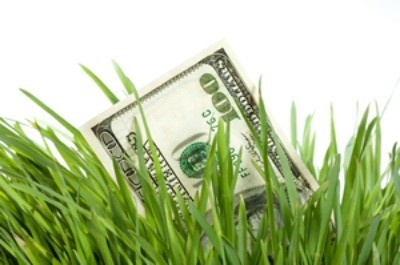The costs associated with maintaining a beautiful lawn can really add up once you factor in seeding, mowing, feeding, watering, and weed control. Fortunately, ALL of these costs can be significantly reduced by simply improving your mowing practices. Follow these simple rules and before you know it you will have a thick, beautiful lawn--for less!
Understanding how grass grows and responds to being cut will help you better understand how to meet its needs. Each blade of grass is an individual plant. The part of the grass we call the blade is actually the leaf. Its main responsibility is manufacturing food, which it then stores in its roots. When grass is cut, restoring the leaf's ability to manufacture food becomes priority one. Everything else (including root growth) is put on hold. Cutting your grass too short (or too often) directly impacts the growth of the root system. Grass with shallow roots are far more vulnerable to stressors like drought, disease, and weeds.
There isn't one standard mowing height suitable for all types of grass, but the ideal height for your grass is probably higher than you think. As a general rule, never remove more than 1/3 of the leaf surface with each mowing. Mow course-textured grasses higher than finer-textured grasses, and mow grasses grown in the shade &frac; inch higher than the recommended height.
Listed below are suggested mowing heights according to grass type. These are not hard and fast rules, just general guidelines compiled from several different sources. For more detailed information, contact your county extension agency or local lawn care professional.
| Grass Type | Mowing Height (inches) |
| Bermuda (common) | 1 to 1 1/2 |
| Bermuda (hybrid) | 1 to 1 1/2 |
| Buffalograss | 2 to 3 |
| Carpetgrass | 1 to 2 |
| Centipedegrass | 1 to 1 1/2 |
| Fescue (Red) | 2 1/2 to 3 |
| Fescue (Hard) | 2 to 3 |
| Fescue (Tall) | 3 to 3 1/2 |
| Kentucky Bluegrass | 3 to 3 1/2 |
| Perennial Ryegrass | 2 to 3 |
| St. Augustine | 2 to 3 |
| Zoysia | 3/4 to 1 |
Mowing your lawn when it is wet is a good way to spread disease. It is also a good way to gunk up your lawn mower. Avoid it.
Many people believe that cutting grass during a drought (and cutting it short) will somehow decrease its need for water and prevent it from turning brown. Nothing could be farther from the truth. Because grass responds to cutting by trying to grow more leaf surface to manufacture food, mowing your lawn during a drought only piles on additional stress.
Grasses are hungry plants, and leaving your lawn clippings on the ground can reduce your fertilizer needs by as much as 30% (not to mention the cost of hauling away yard waste). Many people are afraid that leaving clippings increases thatch, but if you follow the rule of only cutting 1/3 of the leaf surface at each mowing, thatch will rarely be a problem. Mowing more frequently and at a higher height creates shorter clippings and keeps your lawn well fed. The only time you should collect grass clipping is if they are very long, or if leaving them on the ground has the potential to spread disease.
From time to time you should change the direction that you mow. This prevents a "grain" pattern from developing on your lawn and lessens wheel imprints from your lawn mower. Most importantly, it reduces soil compaction.
In the heat of the summer certain cool season grasses go into a natural state of dormancy. During this time active growth stops and they may even turn brown. Don't panic! This is perfectly normal and unless you're experiencing an extended drought, it is only temporary (lasting a 2-3 weeks at most). If you stop mowing and watering during this time you can actually prevent certain weeds from setting in. Just make sure your turf is healthy going into this natural state of dormancy.
It's important to keep your lawn mower in good condition. Dull mower blades will tear grass rather than cutting it cleanly, and jagged leaf edges can leave grass more susceptible to disease. Sharp, well-balanced blades and a well maintained engine will reduce wear and tear on your machine and improve fuel consumption, not mention extend the life of your mower. Always check oil levels and raise the height of your mower deck before starting the engine.
About The Author: Ellen Brown is an environmental writer and photographer and the owner of Sustainable Media, an environmental media company that specializes in helping businesses and organizations promote eco-friendly products and services.
Add your voice! Click below to comment. ThriftyFun is powered by your wisdom!
Great article.
My own mowing practices include what is stated above but also includes an annual powerrake/overseeding in September.
I prefer Fescue which is a cool weather grass and responds well to this approach.
Add your voice! Click below to comment. ThriftyFun is powered by your wisdom!